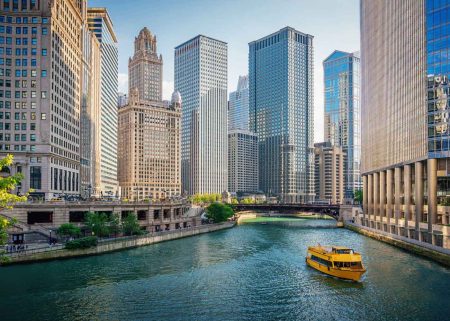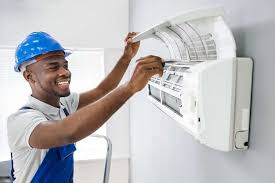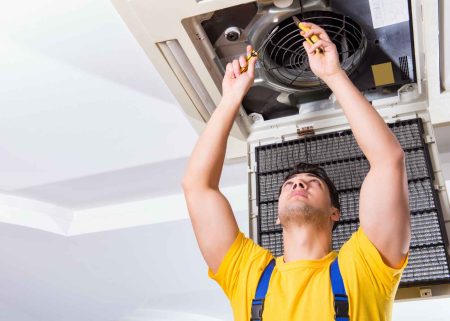Some home appliances can limp along for months or even years with minor issues, but others become safety hazards or expensive problems when they start showing signs of failure. Knowing which appliances need immediate replacement versus simple repairs can protect your family and prevent costly damage to your home.
Certain appliances pose serious risks when they malfunction, while others can cause cascading problems that affect multiple systems in your home. Recognizing warning signs and acting quickly prevents small problems from becoming major disasters.
Understanding when appliances are beyond repair helps you make smart decisions that protect your safety, comfort, and financial well-being.
Replacing Malfunctioning Furnaces and HVAC Systems
A furnace showing signs of serious malfunction poses immediate safety risks including carbon monoxide leaks, fire hazards, and system failures during extreme weather. Strange noises, inconsistent heating, frequent cycling, or visible damage indicate problems that often can’t be safely repaired.
Older furnaces with cracked heat exchangers or faulty safety systems should be replaced immediately rather than patched temporarily. These safety components protect your family from dangerous gas leaks and combustion problems.
When furnace repairs become frequent or expensive, replacement becomes the safer and more economical choice, especially for systems approaching their expected lifespan limits.
Addressing Failing Refrigerators and Freezers
Refrigerators that can’t maintain proper temperatures put your family’s health at risk through food spoilage and bacterial growth. Temperature fluctuations, constant running, or inability to keep food cold indicate serious problems that rarely have cost-effective repair solutions.
Freezer failures can result in hundreds of dollars of spoiled food within hours, making quick replacement essential when problems develop. Strange sounds, excessive frost buildup, or warm spots indicate failing systems.
Modern refrigerators are much more energy-efficient than older models, so replacement often saves money on electricity bills while providing better food safety and reliability.
Handling Water Heater Emergencies
Water heater replacement becomes urgent when you notice signs of tank failure, gas leaks, or electrical problems that create safety hazards. Rusty water, strange noises, water pooling around the unit, or inconsistent water temperatures often indicate problems beyond simple repair.
A failing water heater can cause significant water damage to your home if the tank ruptures or connections fail catastrophically. Older units showing multiple warning signs should be replaced before complete failure occurs, preventing emergency situations that require immediate professional intervention.
Gas water heaters with damaged venting or faulty safety controls pose serious risks including carbon monoxide exposure and fire hazards that make immediate replacement essential for family safety.
Managing Electrical Panel and Wiring Issues
Electrical panels showing signs of overheating, frequent breaker trips, or visible damage need immediate replacement to prevent house fires and electrical hazards. Outdated panels with insufficient capacity for modern electrical demands create ongoing safety risks.
Flickering lights, burning smells, or warm electrical outlets indicate serious wiring problems that require professional evaluation and often complete replacement of affected circuits.
Electrical problems don’t improve over time and can cause devastating fires, making immediate professional replacement essential when serious issues develop.
Dealing with Washing Machine Failures
Washing machines that leak, vibrate excessively, or show signs of mechanical failure can cause significant water damage to your home. Large leaks can damage flooring, walls, and personal belongings within minutes.
Machines that don’t drain properly or show signs of bearing failure often can’t be repaired cost-effectively and may cause additional damage if they continue operating.
Modern washing machines offer better water efficiency and safety features that prevent many of the problems that plague older units.
Recognizing Dangerous Oven and Stove Problems
Gas stoves with damaged burners, faulty safety controls, or gas leaks require immediate replacement to prevent fire hazards and gas poisoning. Electrical stoves with damaged heating elements or faulty controls can cause burns and fires.
Ovens that can’t maintain proper temperatures or show signs of electrical problems pose both safety risks and cooking challenges that make replacement necessary.
Kitchen appliances that create safety hazards shouldn’t be used until they’re replaced with properly functioning units.
Making Safety the Priority
When appliances reach the point where repairs can’t restore safe, reliable operation, replacement becomes essential for protecting your family and home. The cost of replacement is always less than the potential costs of fires, floods, or other disasters that failing appliances can cause.
Acting quickly when appliances show serious warning signs prevents emergencies and ensures your home remains safe and comfortable.







